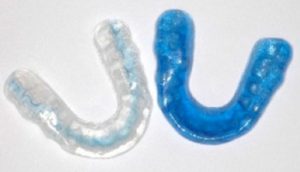
bed rails, bed rail Astondental
Nightguard & TMJ problems
If you have difficulty in opening your mouth, the jaw becomes crooked when gaping, soreness in the jaw joints, or any other occlusal physiological problem, we can usually help you by making an occlusal splint. We at Astondental have extensive experience with occlusal splints and occlusal physiology.
It is becoming increasingly common for people to suffer from tension/stress that causes various symptoms such as headaches and pain in the teeth or jaw due to teeth grinding or clenching.
Diagnosis; The symptoms are diagnosed by feeling your muscles in the neck, throat, shoulders and especially the jaw muscles to see if they are abnormally sore. Recurring headaches, abrasion marks on the teeth, for example, can also be a sign of tooth pressing or grinding.
Treatment: Often information is enough to enable the patient to influence his or her situation. Sometimes, however, it is necessary to make a bite splint, which in the long term results in a reduction of the toothache, making the muscle symptoms decrease and sometimes fade away. The headache, if it is bite-related, can also be influenced in a positive direction. An occlusal splint is a plastic splint specially made by dental technicians that is used to influence the movement pattern of the lower jaw in a way that improves the function of the chewing system and helps to relax tense jaw muscles. It secondarily relieves the jaw joints, jaw and neck muscles. An occlusal splint can also be used to avoid the wear and tear of the teeth during teeth grinding. The splint is a clear plastic horseshoe-shaped splint about 4-5 mm thick. It is often placed in the upper jaw and used during sleep.
Sometimes when the bite is uneven, it is necessary to sharpen the bite or build up the teeth by making porcelain crowns.
Pain in the jaw joints and facial muscles can be treated with laser with good results.
Snark rails
Snoring splint or apnea splint are two of many names for a special brace used to pull the lower jaw forward during sleep. Holding the lower jaw in a more forward position (about 0.5 cm further forward than usual) prevents the tongue and soft palate from blocking the airways.
The rail is often the first choice for snoring problems..